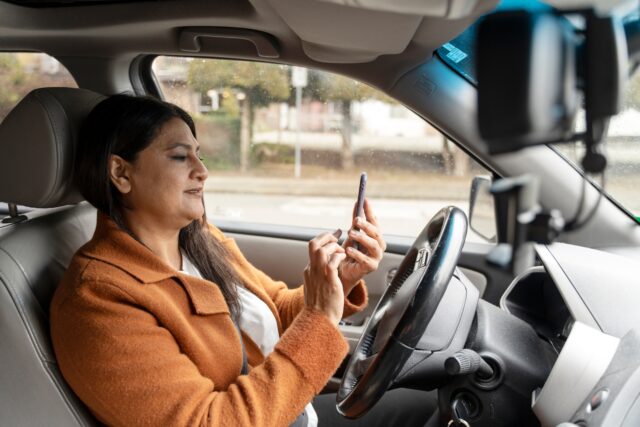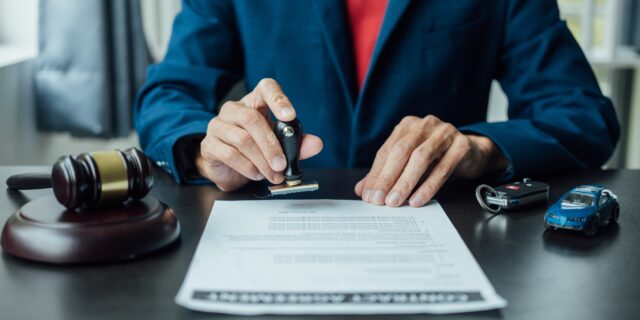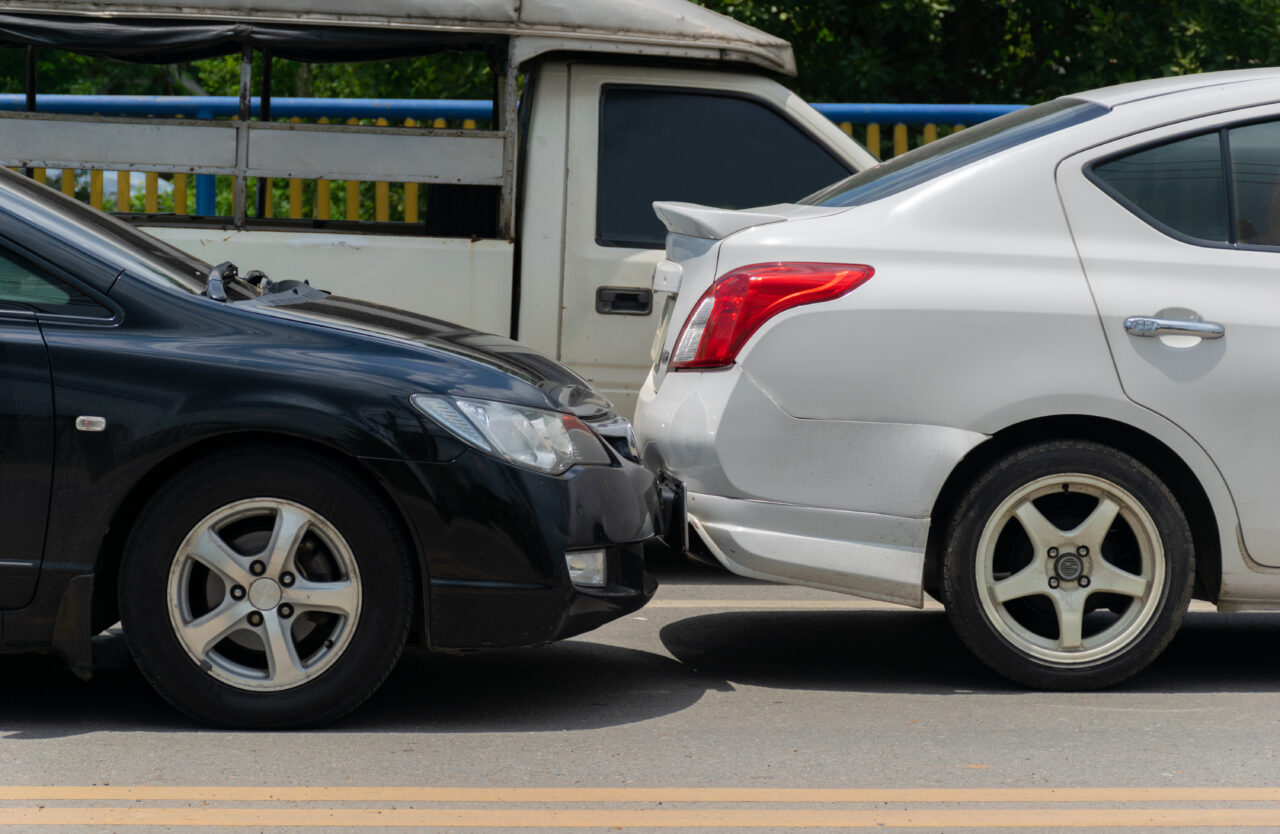Rear-end collisions are all too common on our roads and highways, and they can be a frightening experience for anyone involved. Some of the most typical causes of rear-end collisions include distracted driving, following too closely, speeding, and abrupt braking. If you have been involved in a rear-end collision, seek legal advice from a well-versed Arkansas car accident attorney who can help protect your rights and assist in getting the compensation you deserve. Contact an attorney near you to discuss your case and explore your options.
Causes of Rear-End Collisions
Rear-end collisions are among the most common types of car accidents, often resulting in whiplash, spinal injuries, and vehicle damage. These accidents occur when one vehicle collides with the rear end of another, usually due to a failure to maintain a safe distance or react in time. While they may seem minor, rear-end collisions can have significant physical and financial consequences.
Understanding the causes of rear-end collisions is imperative for several reasons. First, it helps determine liability and strengthens legal claims. Second, it enables us to recognize the importance of seeking legal assistance in such cases. Car accident lawyers can help injured victims recover compensation for medical bills, lost earnings, and pain and suffering. They can also manage the complexities of insurance claims and negotiate with the responsible party’s insurance company.
Distracted Driving
 Distracted driving is one of the leading causes of rear-end collisions. When drivers take their attention off the road, even for a few seconds, they put themselves and others at risk. Common distractions while driving include texting or using a smartphone, adjusting the radio or GPS, eating or drinking, and talking to passengers.
Distracted driving is one of the leading causes of rear-end collisions. When drivers take their attention off the road, even for a few seconds, they put themselves and others at risk. Common distractions while driving include texting or using a smartphone, adjusting the radio or GPS, eating or drinking, and talking to passengers.
Distracted driving is a significant concern across the United States. Despite laws prohibiting texting and driving, many drivers continue to engage in this risky behavior. Texting while driving diverts the driver’s attention from the road for an average of 5 seconds, which is equivalent to driving the length of a football field at 55 mph.
Proving distracted driving in an accident case can be challenging but not impossible. Cell phone records, traffic camera footage, and eyewitness testimony can help establish liability. An experienced car accident attorney can gather this evidence and build a strong case against the distracted driver.
Tailgating and Following Too Closely
Tailgating, or following too closely, is another common cause of rear-end collisions. When drivers do not maintain a safe distance between their vehicle and the one ahead, they significantly increase the crash risk. Tailgating reduces the reaction time, making it difficult to stop in time to avoid a crash.
Tailgating is especially prevalent in rush hour traffic on highways and city roads. It often occurs due to aggressive driving behavior or road rage incidents. Drivers who are in a hurry or display an aggressive attitude on the road are more likely to tailgate and put themselves and others at risk.
Proving tailgating as the cause of an accident can be challenging without sufficient evidence. However, dashcam footage, accident reconstruction reports, and witness statements can help establish the driver’s negligence. A knowledgeable car accident attorney can gather this evidence and present a compelling case.
Speeding and Sudden Stops
Speeding is a significant factor in rear-end collisions. When drivers exceed the speed limit, they reduce their reaction time and increase the force of impact in the event of a crash. This combination can lead to severe injuries and extensive property damage.
In addition to speeding, sudden stops can also contribute to rear-end collisions. When drivers make abrupt stops without warning, the vehicles behind them may not have enough time to react, resulting in a collision. These sudden stops can occur due to various factors, such as distractions, traffic conditions, or a driver’s negligence.
Speeding drivers are usually at fault in rear-end collisions. Speeding is considered negligent driving, making the driver responsible for the damages. Various types of evidence can be used to prove speeding, including black box data from the vehicles involved, traffic camera footage, and skid marks at the accident scene. A skilled car accident lawyer can analyze this evidence and establish the driver’s excessive speed as a factor in the collision.
Drunk or Impaired Driving
Driving under the influence of alcohol or drugs significantly impairs a driver’s ability to operate a vehicle safely. Impaired drivers have slower reaction times and struggle with depth perception, making them more prone to causing accidents, including rear-end collisions.
One of the reasons drunk drivers often cause rear-end collisions is their failure to judge stopping distances properly. Their impaired judgment and delayed braking contribute to high-impact crashes. In addition to the criminal consequences of driving under the influence (DUI) charges, drunk drivers can also face civil liability for the injuries and damages they cause in a rear-end collision.
Victims of rear-end collisions involving drunk drivers can pursue compensation for their injuries and losses. DUI charges against the at-fault driver strengthen injury claims, and victims may be eligible for punitive damages due to the driver’s reckless behavior. Consulting with a car accident attorney will help you understand the legal options available and maximize your compensation.
Weather and Poor Road Conditions
Weather and poor road conditions can also contribute to rear-end collisions. Rain, fog, and ice reduce traction and braking ability, increasing the risk of accidents. Drivers must adjust their speed and following distance to accommodate these adverse weather conditions. Failure to do so can lead to a rear-end collision.
While weather conditions may seem to shift the blame away from a driver, it is essential to note that drivers are still responsible for adjusting their speed and following distance accordingly. Even in bad weather, drivers must exercise caution and drive safely to prevent accidents.
In some cases, city or state agencies may be held liable if poorly maintained roads contributed to a rear-end collision. Damaged or improperly marked roads can create hazardous conditions and increase the risk of accidents. Proving liability in such cases may involve gathering evidence from accident reports and obtaining expert analysis of the road conditions.
Mechanical Failures and Brake Malfunctions
Vehicle defects and mechanical failures can contribute to rear-end collisions. Brake failures, tire blowouts, and faulty sensors can prevent drivers from stopping in time to avoid a collision. These malfunctions can occur due to defective manufacturing, inadequate maintenance, or improper repairs.
Liability in cases involving defective vehicles can extend to the vehicle manufacturer or the mechanic responsible for maintenance and repairs. If a mechanical failure caused the rear-end collision, the injured party can pursue a product liability claim against the manufacturer or a negligence claim against the mechanic.
Gathering evidence in a defective product claim is imperative. Maintenance records, recalls, and expert inspections can help establish the link between the mechanical failure and the accident. Your car accident attorney can guide the injured party in determining the responsible party and initiating legal action.
Who is Liable in a Rear-End Collision?
In rear-end collisions, the general presumption is that the rear driver is at fault for failing to maintain a safe distance and colliding with the vehicle in front. However, there are exceptions to this rule, and liability can vary based on the specific circumstances of the accident.
In some cases, the front driver may be partially responsible for a rear-end collision. Sudden braking without a valid reason, brake light failures, or improper lane changes can contribute to the collision. It is essential to consider all factors and gather evidence to determine liability accurately.
Consulting with a car accident attorney is critical for understanding your jurisdiction’s laws and regulations. They can analyze the evidence, determine liability, and guide you through the legal process.
Injuries Caused by Rear-End Collisions
Rear-end collisions, even at low speeds, can cause a variety of injuries, ranging from mild discomfort to severe, life-altering conditions. The sudden force of impact, particularly when the driver in the front vehicle is unprepared, can lead to significant physical trauma.
Whiplash and Soft Tissue Injuries
One of the most common injuries from rear-end accidents is whiplash, which occurs when the head is suddenly jerked forward and then snapped backward. This violent motion can strain the neck muscles, ligaments, and spine, leading to pain, stiffness, headaches, dizziness, and even cognitive issues. While some cases resolve with treatment, others result in chronic pain and reduced mobility.
Head and Brain Injuries
The force of a rear-end impact can cause a driver or passenger to hit their head on the steering wheel, dashboard, or seat headrest, potentially leading to traumatic brain injuries (TBI). Concussions, skull fractures, and brain hemorrhages can occur, sometimes with delayed symptoms like confusion, memory loss, or mood changes.
Spinal Cord and Back Injuries
Rear-end collisions frequently result in herniated discs, spinal fractures, and nerve damage. The sudden force of the crash can compress the spine, leading to debilitating pain, numbness, or even paralysis in severe cases.
Broken Bones and Internal Injuries
Higher-speed rear-end crashes can cause fractured ribs, broken arms or wrists, and internal bleeding from blunt-force trauma. Seatbelt-related injuries, such as bruising and internal organ damage, are also common, especially in high-impact crashes.
Regardless of the severity, seeking medical attention after a rear-end collision is critical, as some injuries may not present immediate symptoms. If you’ve suffered an injury in a rear-end accident, contacting a car accident lawyer can help pursue compensation for medical treatment, lost earnings, and pain and suffering.
Statute of Limitations in Rear-End Collision Claims
The statute of limitations refers to the legal deadline for filing a claim after a rear-end collision. While the specific time frame varies by state, most personal injury claims, including those arising from motor vehicle accidents, must be filed within two to four years from the accident date. If a claim is not filed within the statute of limitations, the injured party may lose their right to pursue compensation for medical expenses, lost earnings, and other damages.
Exceptions to the statute of limitations may apply in some instances, such as when the victim is a minor, the injuries were not immediately discovered, or the at-fault driver left the scene. Because legal deadlines can be complicated, consult a car accident lawyer as soon as possible to ensure compliance with your state’s laws and maximize your chances of receiving fair compensation for your injuries.
Why You Should Contact a Car Accident Lawyer
After a rear-end collision, seeking legal assistance from a car accident lawyer is essential. Insurance negotiations can be challenging, with insurance companies often trying to minimize settlements or shift blame onto the injured party.
Proving liability in rear-end collision cases requires a thorough investigation and collection of evidence. Car accident lawyers have the skills and resources to gather valuable evidence such as accident reports, surveillance footage, and expert testimony. They can build a strong case on your behalf and negotiate with insurance companies to ensure you receive fair compensation for your injuries and losses.
Maximizing your compensation is another critical reason to contact a car accident lawyer. A lawyer can help recover full compensation for medical expenses, lost earnings, and pain and suffering resulting from the rear-end collision. With their guidance, you can navigate the legal process confidently and increase your chances of receiving the compensation you deserve.
Were You Injured in a Rear-End Collision? Contact a Car Accident Lawyer Today
 Don’t face the insurance companies alone. Contacting a car accident lawyer increases your chances of receiving fair compensation for injuries and losses. These professionals have the knowledge and experience to handle complex insurance negotiations, ensuring your rights are protected.
Don’t face the insurance companies alone. Contacting a car accident lawyer increases your chances of receiving fair compensation for injuries and losses. These professionals have the knowledge and experience to handle complex insurance negotiations, ensuring your rights are protected.
Many Arkansas personal injury attorneys offer free case evaluations with no upfront costs. During a consultation, an attorney can review the details of your rear-end collision and provide personalized guidance regarding your legal options. Engaging the services of an attorney does not require any financial commitment unless they secure compensation on your behalf.
Protect your rights and get the compensation you deserve by contacting a car accident lawyer today. They will fight for your rights, handle all legal aspects of your case, and work towards a favorable resolution. Don’t wait—reach out to a car accident lawyer near you to discuss your claim and explore your options.

